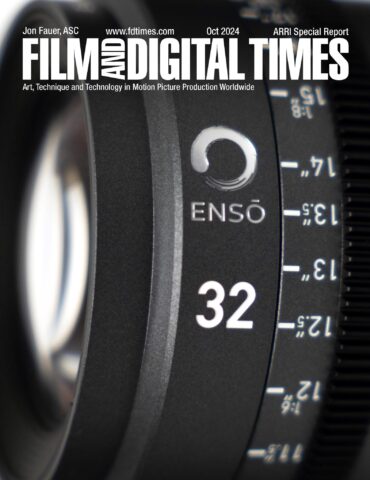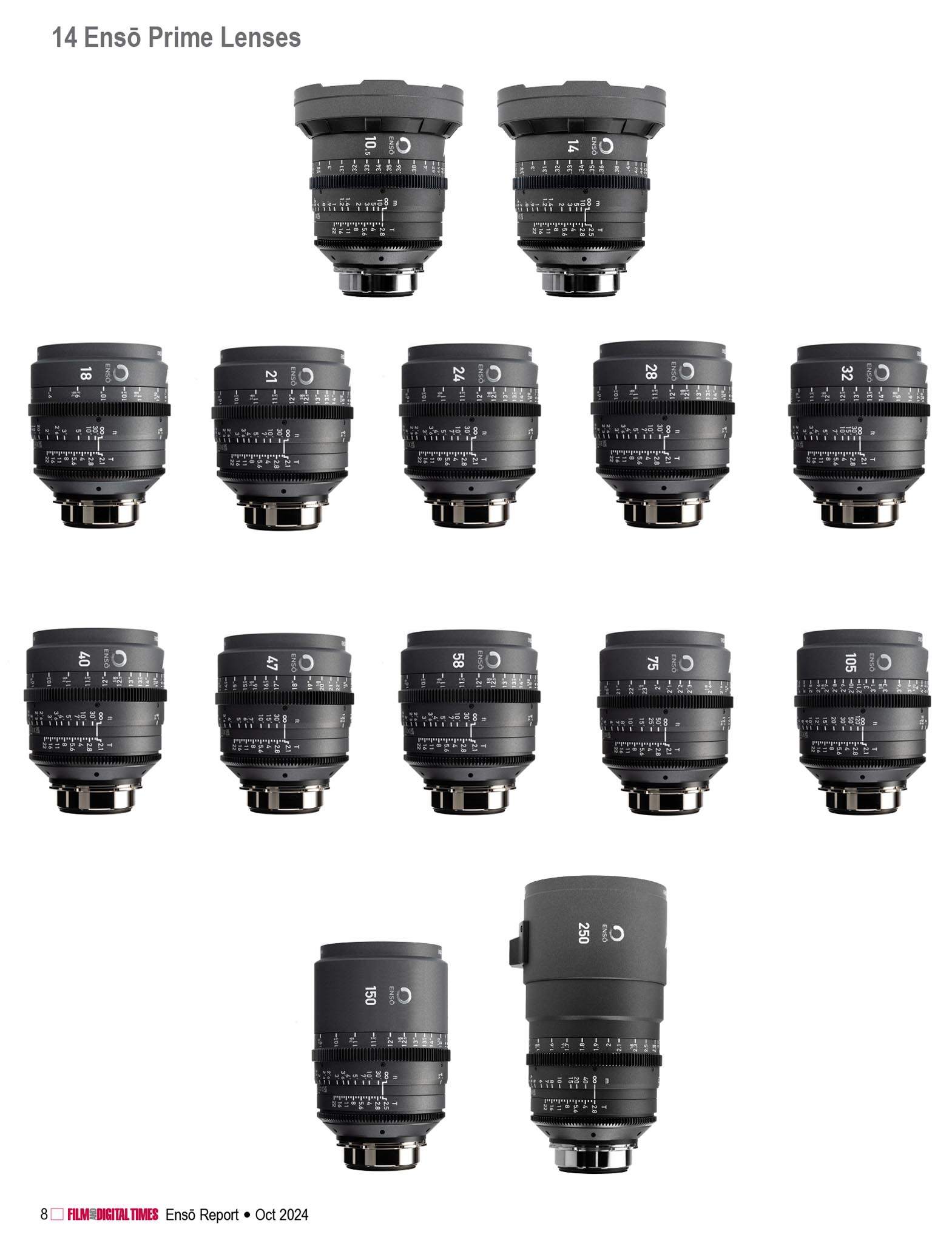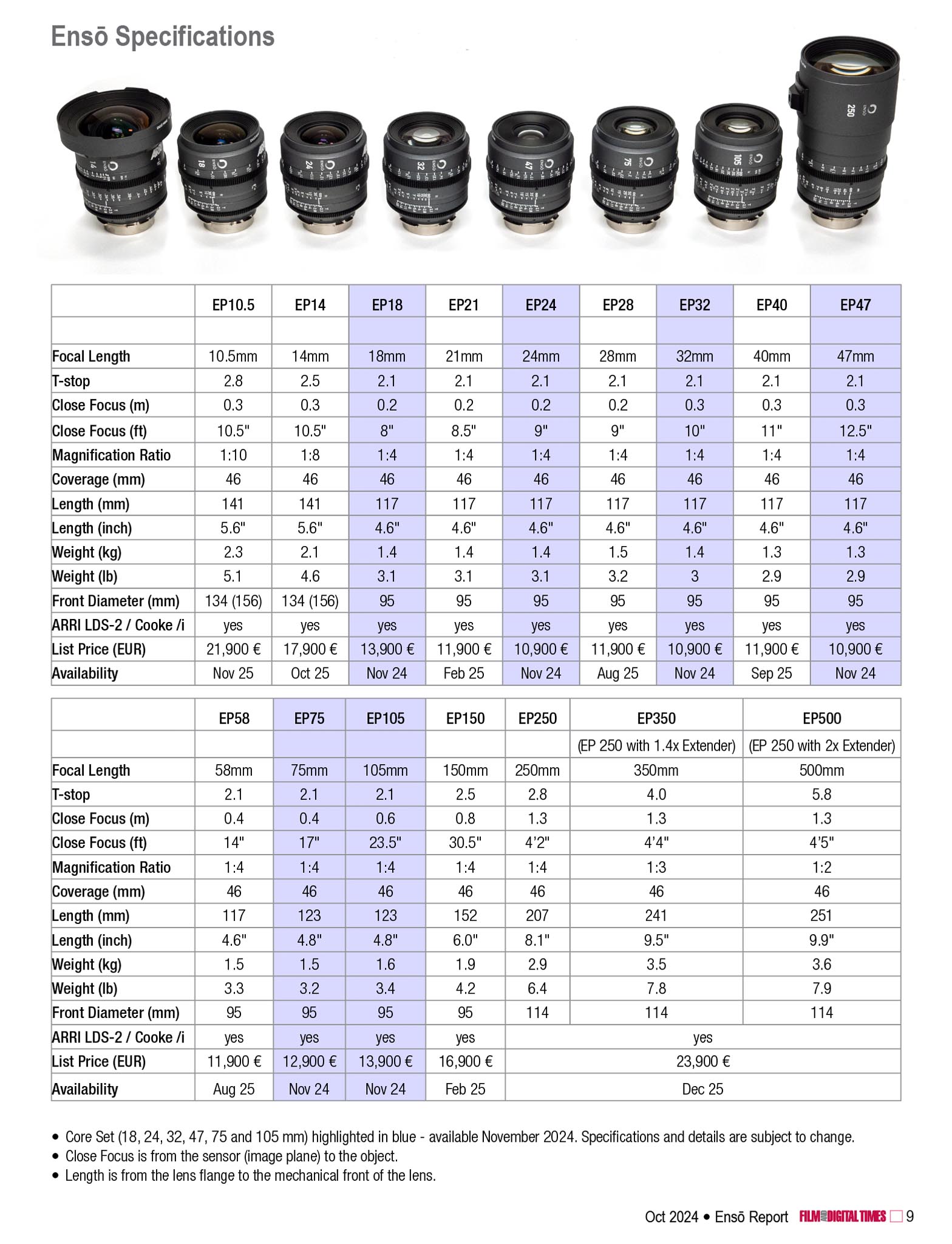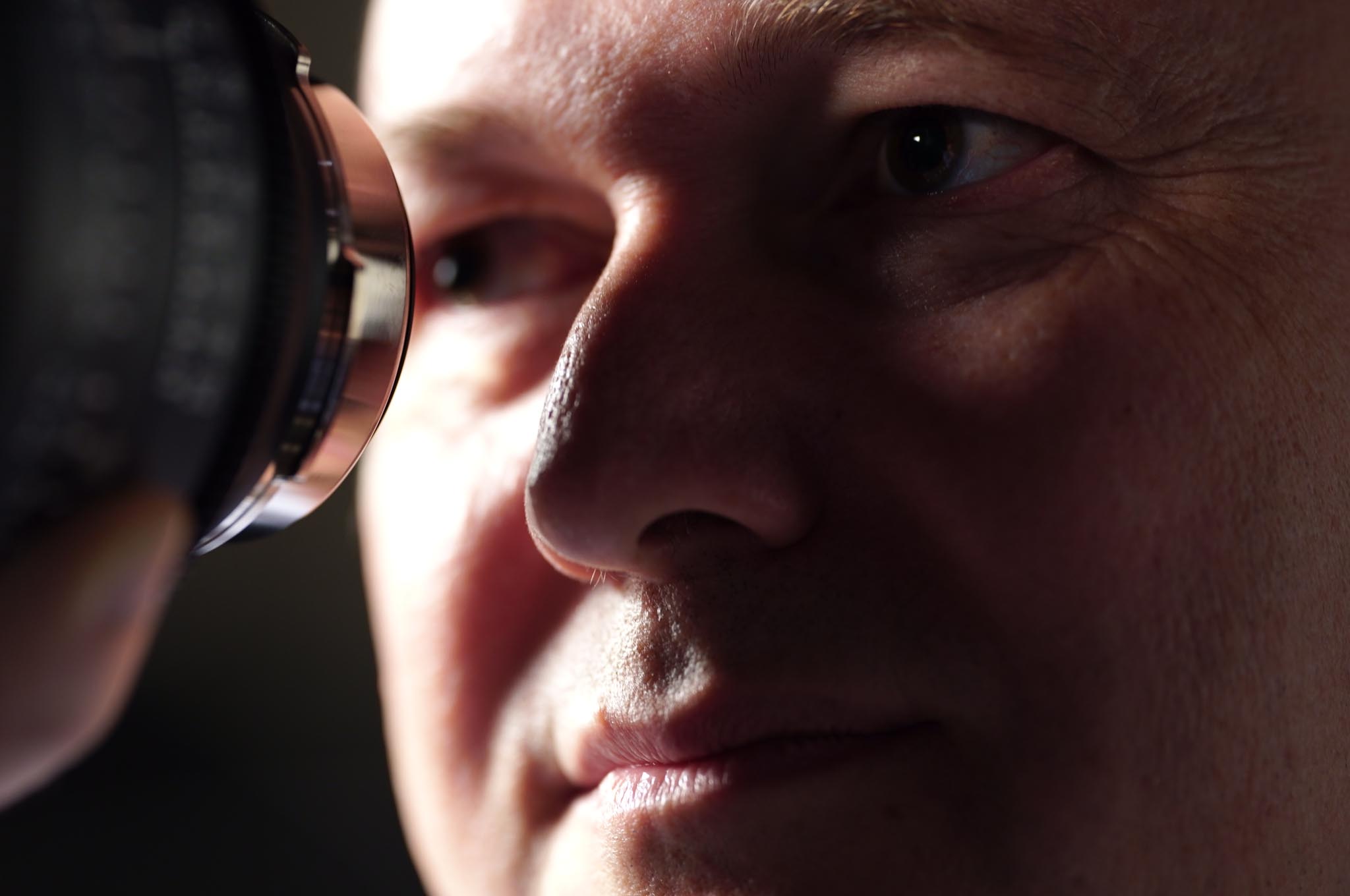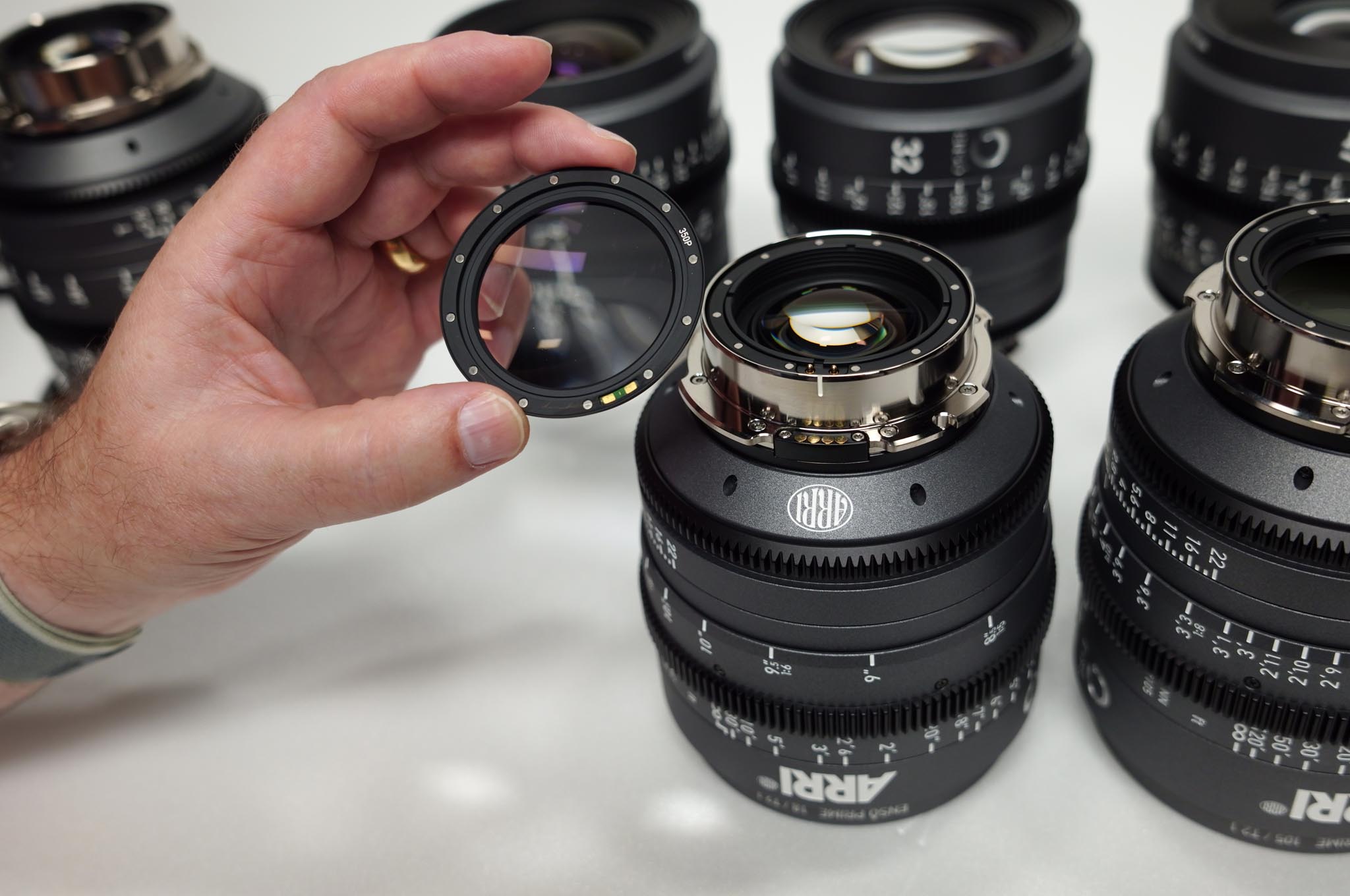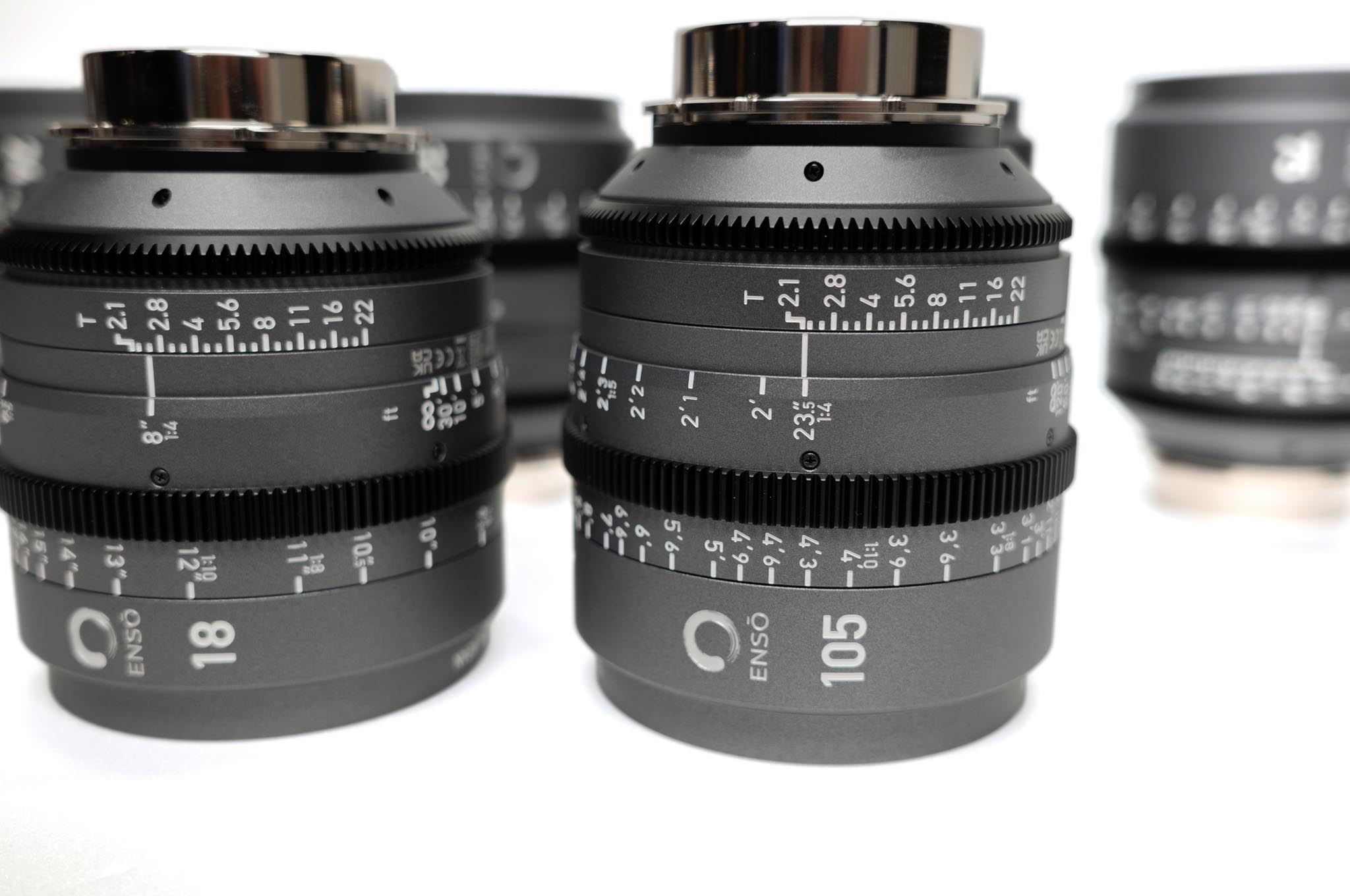Download FDTimes Special Ensō Report
Download 36-page free FDTimes ARRI Ensō Special Report. 12.7 MB PDF.
Full specifications, details, framegrabs, tour of Japan with Ensō Primes, article about Ensō Launch Film.
- Set Adobe Acrobat Reader to 2-page view, show cover page.
- Set Apple Preview to View>2 pages.
Summary – Quick Read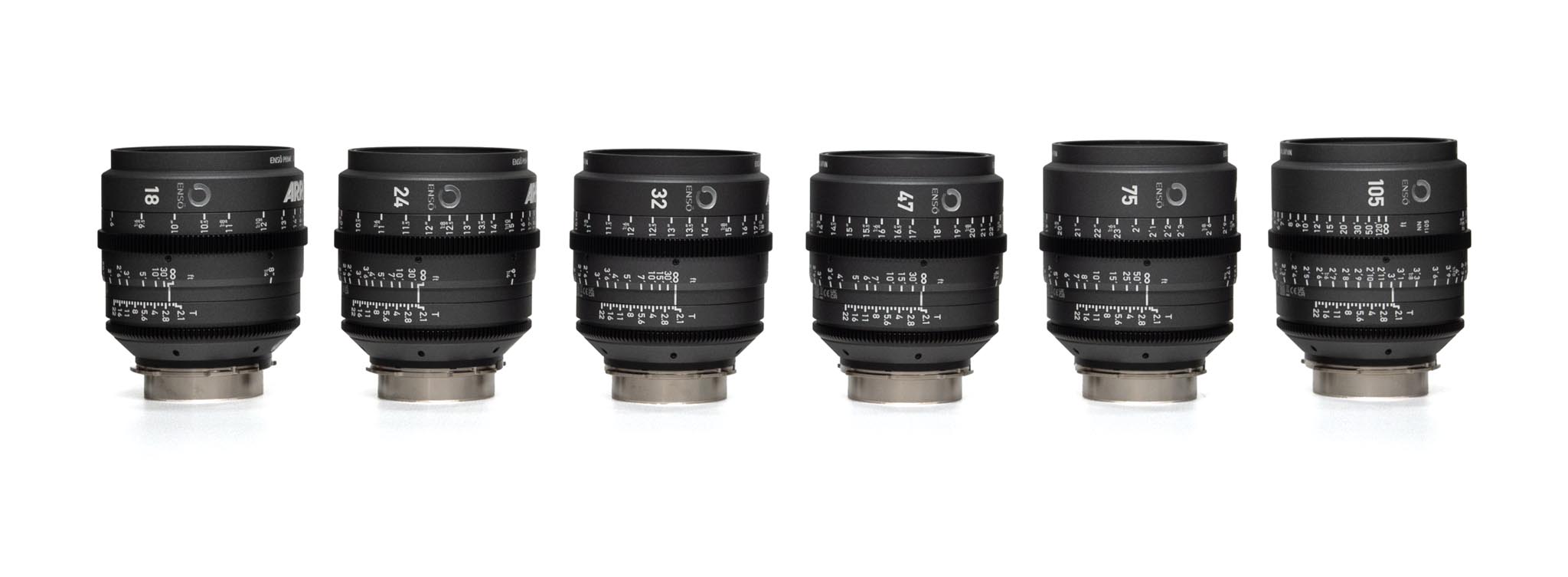
Meet Ensō with a diacritical macron ō.
On your keyboard, that’s the “o” key pressed down for 3 seconds, followed by the number 9 or 7.
Pronounced like Enzo as in Ferrari, with more of an “s” sound, as in serene, than a “z” like zoom-zoom engine roar.
What are Ensō Primes?
ARRI Ensō Primes are affordable Large Format (Full Frame) lenses, with focal lengths from 10.5mm to 250mm. Most of them have a maximum aperture of T2.1 and they come in LPL mounts with LDS and /i lens metadata. ARRI’s acronym is “EP.”
The initial core set—shipping in November 2024—consists of 18, 24, 32, 47, 75 and 105 mm. It includes an Ensō Vintage Elements Kit of 6 diopters that attach magnetically to the rear of the lens.
Next year, the 10.5, 14, 21, 28, 40, 58, 150 and 250 mm primes will be added, along with a 1.4x and 2x tele extender.
What is the difference between Ensō and Signature Primes?
It’s like a high school exam question. Ultra Prime is to Master Prime as Ensō is to….(fill in the blank). Yes, Signature Prime. That’s a bit simplistic, but Ensō lenses offer a lighter, shorter, ever-so-slightly slower option (T2.1 vs T1.8 average).
Signature Primes have magnesium barrels. Ensō Primes have aluminum barrels.
How do they look?
Cutting to the chase: how do they look? In the framegrabs on the following pages, look at the smooth skin tones, gentle focus fall-off and beautiful bokeh that would have an impressionist painter weep.
My impressions: Ensō primes match Signatures in color, contrast and concept. They flare and ghost ever so slightly more, like subtle brushstrokes when you want them, and easily tamed with flags or mattebox eyebrows when you don’t.
Extremely Close
Ensō lenses focus much closer than most other prime lenses. See ECU on Thorsten Meywald (above). All Ensō primes have an almost macro close-focus ratio of 1:4, without diopters in front. That means you can fill the frame with a subject or object that’s 4 times the diagonal of a Large Format sensor. So, 4 x 44 mm is 176 mm (6.9 inches) — about the width of a postcard. Try a continuous rack-focus from an extremely close close-up all the way to infinity. You cannot do that with front diopters.
What is Ensō ?
Each lens is engraved with an elegant Ensō symbol.
Drawing Ensō is a beautiful yet difficult task. It is done with an ink brush on Japanese washi paper, striving for perfection but realizing it cannot be achieved. You draw the Ensō in one fluid move. It takes years of practice, often attempted every day. Focus pullers will relate to the paradox and the process.
Ensō Logo
What were Thorsten Meywald, VP Product Management Lenses ARRI Group and his colleagues thinking when they came up with the complicated calligraphic Ensō logo? How do you get a brushstroke, whose ink runs out, onto an aluminum lens barrel?
Thorsten explains, “Look closely at the Ensō logo on the lens. You see the brush stroke, which is engraved. That’s the philosophy of Ensō. Start with something simple and try to make it as perfect as possible, but it’s always an understatement. First, we started with a painting, really a brushstroke. After many attempts, we scanned it to a vector graphic. Then, the image was transferred to a template for mechanical engraving, which is actually much deeper compared to laser engraving.
“The scales are also engraved mechanically, resulting in cavities that are deeper and lettering that appears more pleasing because the edges are smoother.
Ensō Vintage Elements
“Ensō Vintage Elements are rear diopters with plus and minus strengths, but they are not used to focus closer—they are additional elements that detune the lens and affect the bokeh, producing different creative looks.
Can you use Signature Prime Impression V Filters on Ensō?
“Signature Primes use Impression V Filters at the rear. And yes, Impression V Filters for Signature lenses can be used on Ensō Primes, but Ensō Vintage Elements cannot be used on Signature lenses.
Ensō Vintage Elements vs Signature Impression V
“Compared to Impression V Filters, Ensō Vintage Elements have a steeper fall-off in image performance from center to corner and, in general, they are sharper at the center compared to Impression V Filters. Technically, Impression V Filters add spherical aberration to the lenses and Vintage Elements add field curvature as well as some spherical aberration.
“Ensō Vintage Elements on Ensō lenses can be identified by the camera since they have a built-in chip with all the metadata of the Vintage Element. Impression V Filters have no chip and can’t be identified electronically.
Optical design
“Ensō Primes have aspheric elements inside wherever they are needed, especially on the wide angle lenses. The focus mechanism uses a smooth cam system. They have floating or coupled elements to achieve high performance, especially at close focus. Similar to our other lenses, the optical elements first undergo a regular polishing process. After careful measurement, any imperfections are smoothed out to micron tolerances with precision MRF polishing on huge machines.
Who will be the users of Ensō lenses?
“Ensō Primes are universal and versatile, for small and large rental houses as well as owner-operators. They will be at home on scripted features, unscripted series, television, live productions, commercials, music videos, corporate films and documentaries.
Close Focus
“Even the 250mm Ensō has a minimum focus of 1:4. Imagine doing a corporate film and you are focused on a robotic machine with arms whizzing around. It’s too dangerous to get near, but your 250mm Ensō has a minimum object distance of 1.30 meters (4’3″) that gets you up close—safely.
“But your 18mm Ensō has the same 1:4 close focus ratio and gives you the same minimum object field of about 5.7 inches wide at a minimum object distance of 20 cm (7.9 inches). Having the same minimum object field of view throughout the entire set is interesting and unique.
The 250mm lens gives you an image that is more compressed—the background appears closer. The 18mm background appears more distant. On most previous lens sets, it was often a hassle having minimum focus distances that were much further away.
Uniform Lens Housings
“Most Ensō Primes have a front diameter of 95 mm, like the Ultra Primes. The Enso 250mm has a 114 mm front diameter, like Master Primes. Therefore, you can use a Master Diopter, Leitz Cine MacroLux or other diopters in front to get even closer focus.
“In addition, the lens rings are in the same position on all 14 Ensō lenses, which means that lens motors don’t have to be moved when swapping focal lengths. The uniformity of the front diameters and lens rings help make the Ensō Primes quick and easy to work with on set.
Rear Extenders
“The Ensō 250mm comes with a 1.4x and 2x extender—to provide the equivalent of a 350mm at T4 or 500mm at T5.8.
“The extender reduces the transmission a little and the T-stop is slightly deeper compared to the geometric f-stop, which would be F5.6. And, with a little math, we see that the 2x extender provides an even closer minimum object field of 1:2.
10.5 and 14mm Ensō Primes
“For setups that are extremely wide and incredibly close, we have the 10.5mm and 14mm Ensō Primes. (Here’s looking at you, Revenant and Birdman.)
“These lenses come with exchangeable 134 and 156 mm diameter front rings. The 134 mm front ring is intended for shooting in Super35. It lets you use smaller matteboxes and 4×5.65″ front filters. If you’re shooting Large Format, you should use the 156 mm diameter front ring and a Mattebox for 6.6×6.6″ front filters.
Exteriors
“Ensō Primes have black anodized barrels. After anodizing, we add a layer of metallic paint that contains metal particles to provide a distinct glow. If you shine a strong light on the surface of the barrel, you will see the reflections of the metallic particles. That’s just one little detail of what we have done. It’s the same thing with the brushstroke. If you look very closely at the Ensō logo, you see the engraved details.
“And that’s the philosophy of Ensō. It’s a disciplined understatement. Start with something simple, try to make it as good as possible, and as in Zen art, accept the strength of imperfection.”
FDTimes Ensō Special Report
Download 36-page free FDTimes ARRI Ensō Special Report. 12.7 MB PDF.
Full specifications, details, framegrabs, tour of Japan with Ensō Primes, article about Ensō Launch Film.
More information about Ensō from ARRI

